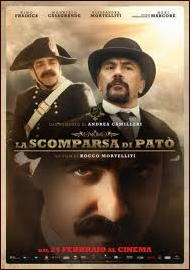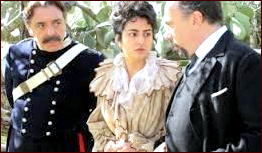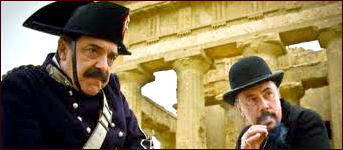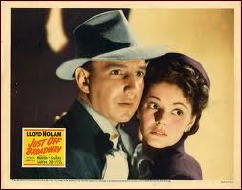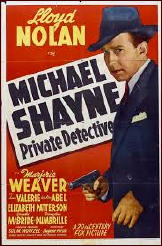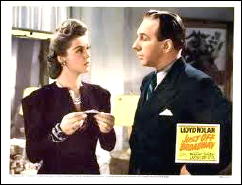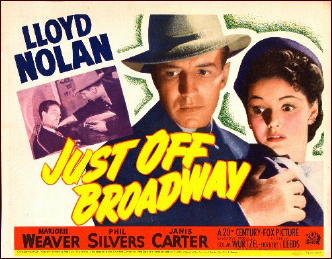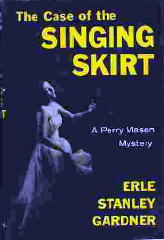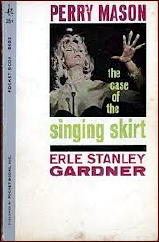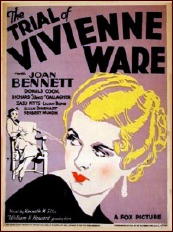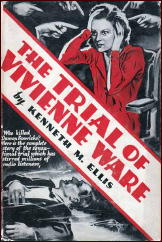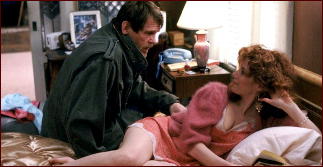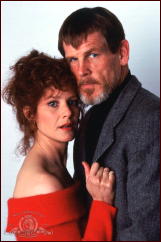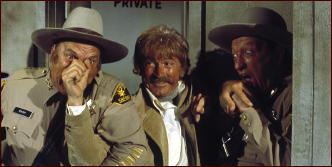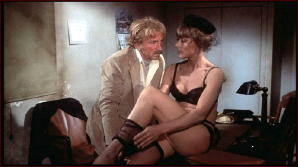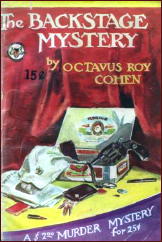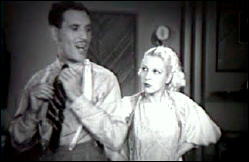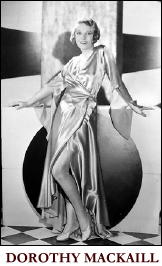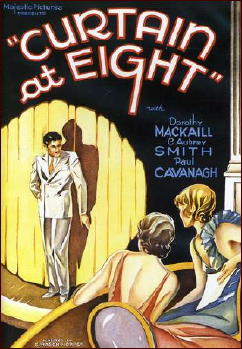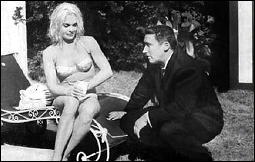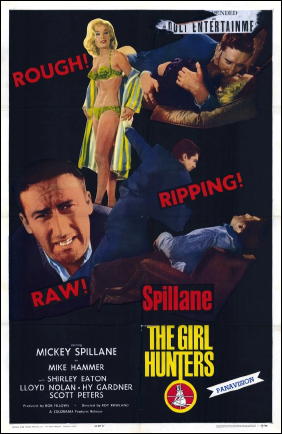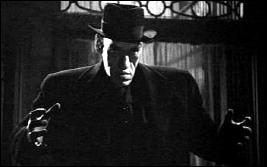VOICE WITHOUT A FACE:
Finding a Face for Philip Marlowe
by David Vineyard
Raymond Chandler seldom painted word portraits of his heroes, perhaps because of the falter in his first story, “Blackmailers Don’t Shoot,” when he gave his protagonist Mallory a “diffident” touch of gray in his hair. We know what the Chandler hero looks like; tall, dark, masculine, attractive to all society types, but if you read closely you will notice that complete as he is, Philip Marlowe has no face. That wasn’t a problem for Chandler, but it would become one in other media.
That became Hollywood’s quest when they took notice of Chandler’s work: What did Philip Marlowe look like? Even Chandler struggled with that, veering from Cary Grant to Dick Powell, from Fred MacMurray to Humphrey Bogart — Chandler’s favorite, but not how he describes Marlowe in a letter that sounds suspiciously like MacMurray and Powell, and a young bartender he met in Hollywood, Robert Mitchum.
The first screen Marlowe’s weren’t Marlowe at all. George Sanders’ Falcon took on Farewell My Lovely as The Falcon Takes Over, and Lloyd Nolan’s Michael Shayne took on The High Window as Time to Kill, and while both were faithful adaptations of the books, they weren’t Philip Marlowe. Marlowe was still faceless. All that changed in 1946.
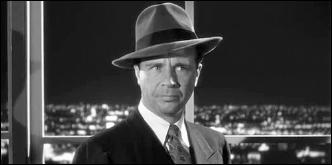
Well, actually it changed in 1945, but it was 1946 before anyone knew, and by then Marlowe already had one face, ex-crooner and male ingénue Dick Powell in the career changing Murder My Sweet, based on Farewell My Lovely, the Edward Dymytrick film that gave that became mid-wife to the film noir genre that had been in labor since German expressionist cinema in the teens.
Powell is much as we imagine Marlowe, a bright attractive, but not devastatingly handsome, man, a bit shop worn, a bit defensive, and too human for his own good. To that Powell brings a post-war cynicism common to many ex-G.I.s, an ironic voice tinged by sarcasm, and a leery eye toward the idea he is so devastating that women like Claire Trevor will just throw themselves at him, at least without a distinct curve on the act. Bluff, brash, rude, and surprisingly gentle, Powell seemed to find every niche of Marlowe’s character, and would even play Marlowe again of television in an adaptation of The Long Goodbye.
Howard Hawks and screenwriters Leigh Brackett, Jules Furthman, and William Faulkner had attempted Marlowe earlier in 1945, but a year too early for the slow to change moguls, who held the film back until Dymytrick’s film hit the boxoffice. The money showed them the light and The Big Sleep was rushed into release along with the second iconic face of Philip Marlowe, Humphrey Bogart.
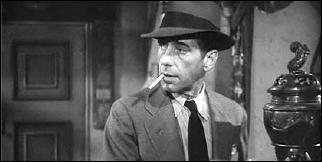
Physically Bogart was no more Marlowe than he was Sam Spade, but he brought to the character and screen a world weary romanticism and guarded heart only hinted at in the Powell Marlowe. Teamed with real-life wife Lauren Bacall, Bogie’s Marlowe has a subdued eroticism running beneath the tough façade. Add to that a very real tendency to defend the helpless and tilt at windmills, and Bogart may come closest to the fully developed Marlowe we see in Chandler’s masterpiece, The Long Goodbye.
Sadly the film is deeply flawed by the ending imposed by the censors, one so absurd it comes close to ruining a masterpiece. Even seeing it the first time in my teens I can recall thinking John Ridgey’s (Eddie Mars) fall guy was covering up for someone, Carmen Sternwood, who conveniently drops out of the film midway through the proceedings before Marlowe can throw that famous old maid hissy fit and throw her out of his apartment and bed.
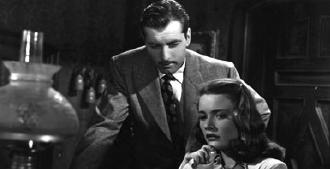
Still, even Chandler was impressed by what Bogart brought to the role. Powell’s Marlowe is still half a genial boy turned rude. Bogie’s Marlowe is a man.
That said, I agree with noir critic Eddie Mueller, The Big Sleep is as much a screwball comedy as it is film noir.
George Montgomery is the next Marlowe, and not bad in John Bahm’s The Brasher Doubloon. based on The High Window. Replete with a silly mustasche, Montgomery is Marlowe lite.
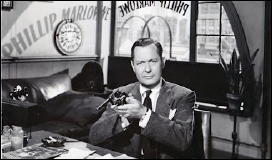
Still he fares better than the next Marlowe, who for the most part is a voice without a face, Robert Montgomery in his own film of Lady in the Lake. Using an experimental subjective camera technique the film falters, despite good work from its star/director and a fine cast including Audrey Totter, Lloyd Nolan (outstanding), and Tom Tully. The problem is it doesn’t look like a movie half so much as a live television broadcast.
Save for Phil Carey’s slick Marlowe on a brief lived television series and Powell’s second outing, we don’t get another Marlow until James Garner in the sixties take Marlowe, based faithfully on The Little Sister.

Garner’s Marlowe has generated a lot of criticism, but in many ways he is the epitomy of the Marlowe in that book, and the wary humor and slow exasperation that would make him a star is ideal for the character. He sparks in the scenes with cop Carroll O’Connor, Rita Moreno’s stripper, and Gayle Hunnicutt’s film star, and Bruce Lee has two of the best scenes of his career in a small role.
That said, the critics and many fans savaged the film and Garner. Maybe if he had tried a fedora and trenchcoat …
Elliot Gould is a terrific Marlowe — in audio books — on screen he’s not so good, though not even Bogart could have played the role to anyone’s satisfaction in Robert Altman’s petty tantrum of a film because of Chandler’s homophobia, The Long Goodbye. The movie is badly acted, hard to follow, and completely foreign to the character. Altman so disliked Chandler and Marlowe he undercut his own film, and even a Leigh Brackett script can’t save it.
On my own personal list of the worst films ever made this ranks high. I have no problem with Altman disliking Chandler, or even wanting to savage the mythos, but not in a bitchy and at times campy film that plays like something made by the Hasty Pudding Club, arch, snide, and boring.
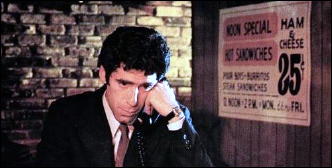
By the way, if I wasn’t clear, I don’t like it.
Too old, too fat, too weary, we finally get Robert Mitchum’s Marlowe in Farewell My Lovely, and it is a lovely one. Dick Richards’ moody recreation of noir and Mitchum’s well earned cynicism make this film work, and he’s ably abetted by another noir veteran John Ireland as Nulty, the cop.
Alas, almost no one else in the film is up to them, and Richard Kiel’s Moose Malloy will make you yearn for Mike Mazurki and Ward Bond, who played the role in earlier films. It’s a singularly bad performance in a role vital to the film. Like me, you may well wonder why Marlowe didn’t just shoot the hulking jerk in self-defense.
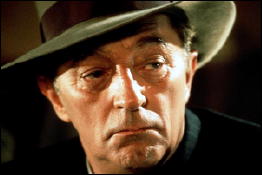
But even with that, Mitchum manages to give us close to the perfect Marlowe, if only it had come even ten years earlier.
And even he can’t save The Big Sleep, which moves Marlowe to contemporary London, and falters badly despite the presence of James Stewart, Oliver Reed, and Richard Boone as the sadistic killer Canino. When Colin Blakely dies in the Elisha Cook Jr. role, you almost envy him being out of this. Still that scene and a few others work, and you can see where it might of been.
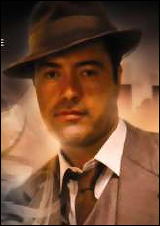
Powers Boothe gets the part for the HBO series Philip Marlowe, and he’s great in well done adaptations of the short stories, but Danny Glover as a black Marlowe in the Fallen Angels adaptation of “Red Wind” doesn’t do half so well, largely because they add nothing to the story of the role even though Glover is a black Marlowe in the forties. It’s as if the story is set in a parallel universe where prejudice never happened, he’s no Denzel Washington and Easy Rawlins ,just a private detective who happens to be black.
To date, James Caan is the last Marlowe in a made for television film of The Poodle Springs Murders, based on Chandler’s unpublished last novel completed and published by Spenser’s Robert B. Parker. Caan’s older Marlowe, confronting love, marriage, and wealth is a new dimension, but when things get rough he’s every bit Marlowe. It’s an exceptionally well done film, and it captures the unease of Marlowe in the new world of the late fifties and early sixties.
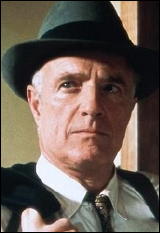
Marlowe is also available on radio and audio books. Van Heflin and Gerald Mohr essayed the role on the classic radio production from the forties while Elliot Gould and Daniel Massey (Raymond’s son) are the audio book voices, and both very good, while more recently Ed Bishop (UFO) has been Marlowe’s voice on BBC 4 in several readings and dramatizations.
Still Marlowe remains an elusive voice. You’d know him if you saw him or heard him speak, but you never really have so you remain wary. Some of that is Chandler’s intent, since Marlowe is everyman as the hero, that famous man “good enough for any world” from the essay “The Simple Art of Murder.”
Philip Marlowe is a living breathing flawed human being; he’s a hero because he doesn’t let that stop him. He’s a man because he questions the motive and necessity of those heroics. He’s Philip Marlowe because he does those things in an iconic literary voice that has so come to dominate literature even today’s literary icons use it. (Michael Chabon for one.)
The fact is he doesn’t have a face — or need one. He has a voice, and no actor, good or bad, can ever take that away from him, or us, and I don’t think there is a reader who ever read a page of Raymond Chandler who wouldn’t know him anywhere.
